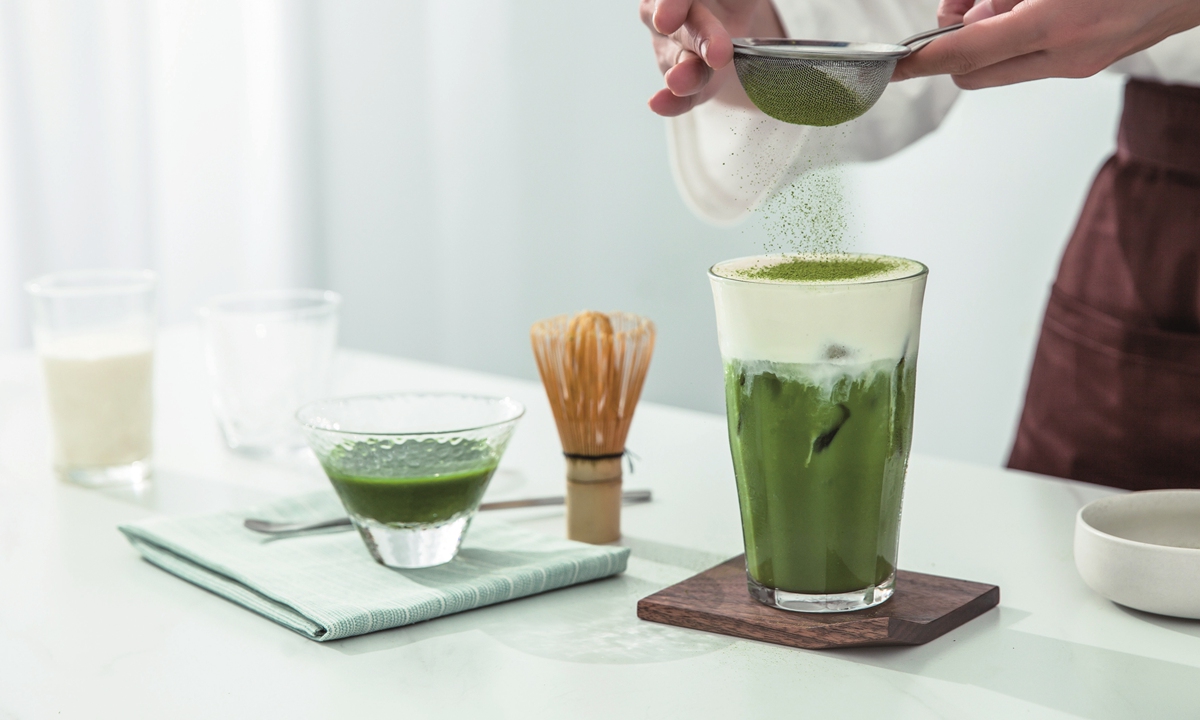
Photo: VCG
Liu Lijia takes a break from her computer screen in Beijing and places two orders on her mobile phone, one for herself and another for a friend in the southern city of Guangzhou some 2,200 km away.
Before long, brick-and-mortar chain stores in the two cities have the orders delivered -- two tea drinks blended with fruits and cheese. Taking sips of the tea-based beverages, the pair post snapshots on social media to show their visual "tea party."
In recent years, China has seen a boom in "new tea beverages" that combine brewed tea, fresh fruits and vegetables, sometimes laced with dairy products or juice, which are particularly sought-after among young people like Liu.
With natural ingredients, fancy designs and digital services, such drinks cater to the spending habits and aesthetics of young consumers, a group that seeks novelty and has relatively strong buying power, and which observers believe reflects a new consumer market.
A statistical report by the China Chain Store & Franchise Association (CCFA) shows that there were about 378,000 chain stores selling tea-based drinks across the country by the end of 2020, not only in metropolises like Beijing and Guangzhou, but also in second- and third-tiered cities.
In June, HEYTEA, a popular beverage chain headquartered in Guangdong, launched a new product that was inspired by and named after "A Dream of Splendor," a smash hit TV drama. The drink flew off the shelves and set a record sales volume of 300,000 cups nationwide in a day.
As lightweight commodities, new tea drinks help meet young people's desire for relaxation and social sharing, and have even become a vehicle for social life, according to a manager of HEYTEA.
Now, when a new flavor of drink is launched, hordes of young people would line up in front of beverage retailers or flock to online takeaway platforms looking forward to a freshly made cup and then cannot wait to post it on social media, just like Liu and her friend.
"People say that a cup of tea beverage a day keeps tiredness away, and I do agree with that," Liu said.
According to data from iMedia Research, the market scale of China's tea-based drinks exceeded 279 billion yuan ($39 billion) in 2021 and is estimated to reach about 375 billion yuan by 2025.
"Previous popular beverages like milk tea used to be brewed with tea powder and creamer. With higher living standards, customers are now demanding higher-quality food and drinks," said Wang Jingyuan, founder of LINLEE, a brand that focuses on novel tea-based lemon drink.
Tapping into the huge market, tea-based beverage chains have responded to the demand for low-sugar diets, using health-oriented ingredients such as natural sweeteners in place of syrup, an artificial sugar substitute that was commonly used in the past. Meanwhile, peripheral products have also been put onto the shelves to enrich the consumption experience for people.
According to Sun Gonghe, an official with the CCFA, the fashion for tea-based beverages has re-ignited people's interest in tea drinking generally and helped drive home the Chinese tea culture among the young generation.
A recent report on tea beverages predicts that by 2025, the total scale of the tea beverage industry around the world will reach $318.5 billion.
While more and more China's tea-based beverage chains are eyeing-up overseas market, experts have cautioned against potential problems with food safety and industrial standards.
In May 2021, a specific product standard special for drinks made with tea was released, the first of its kind in China, in an effort to promote the long-term development of the industry.
Xinhua




